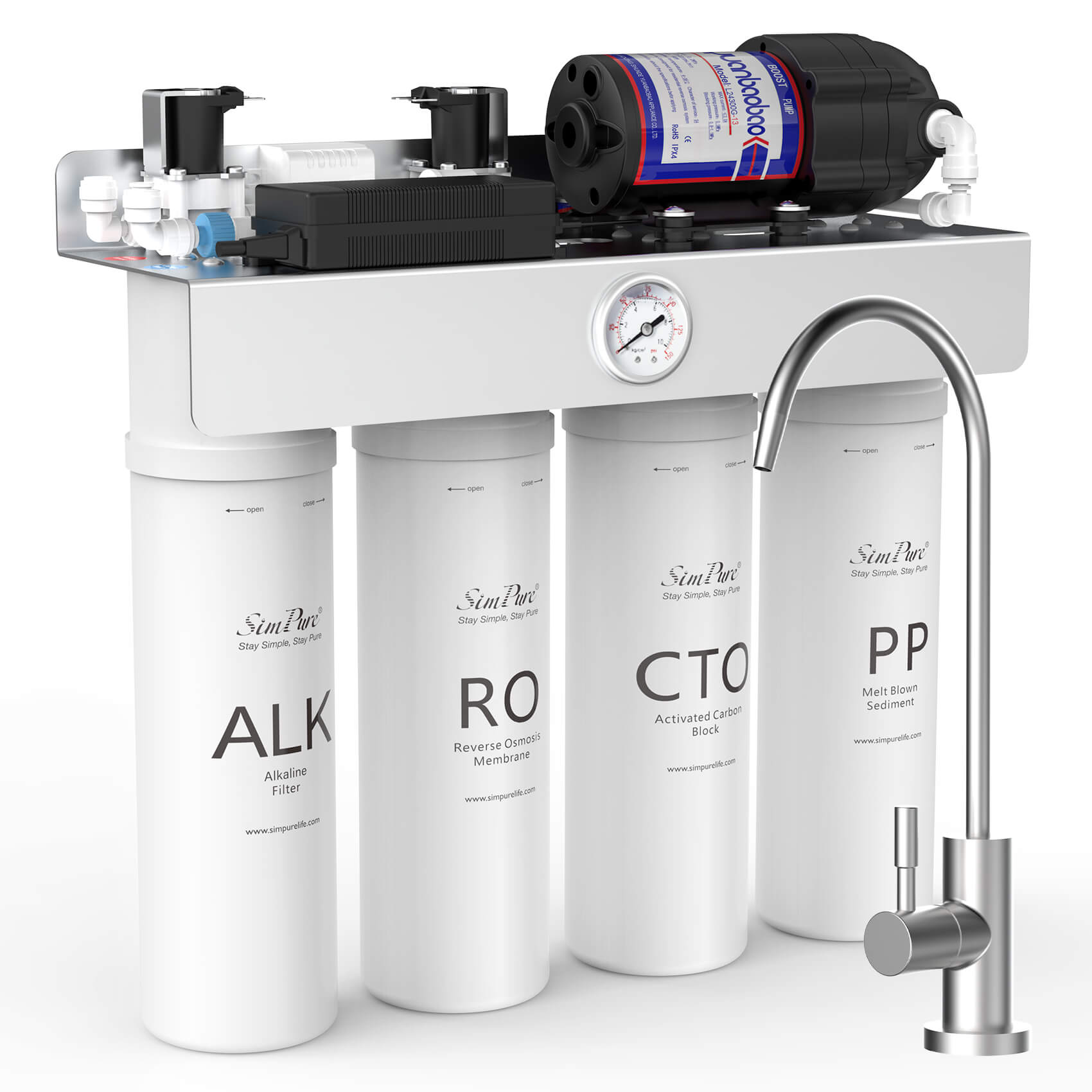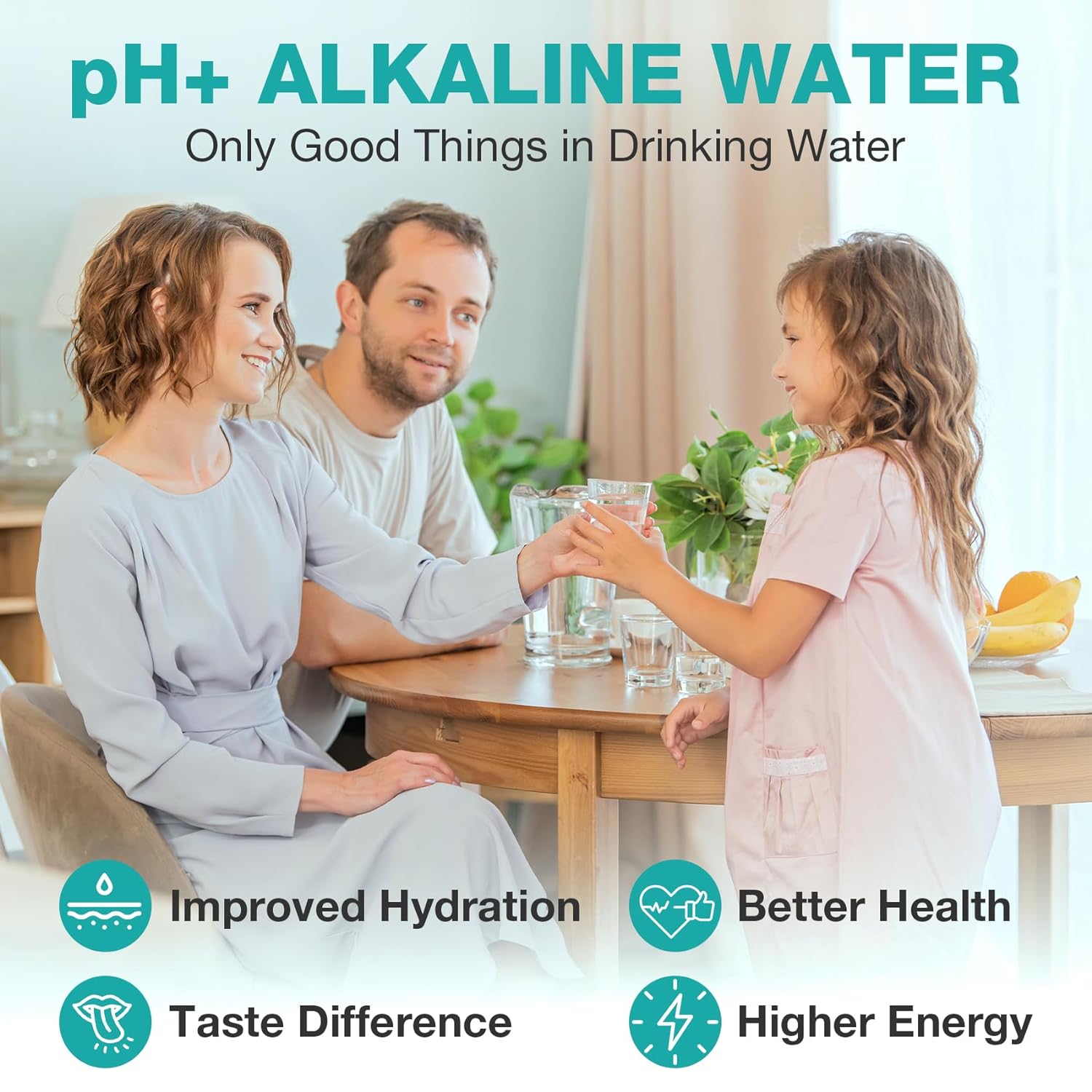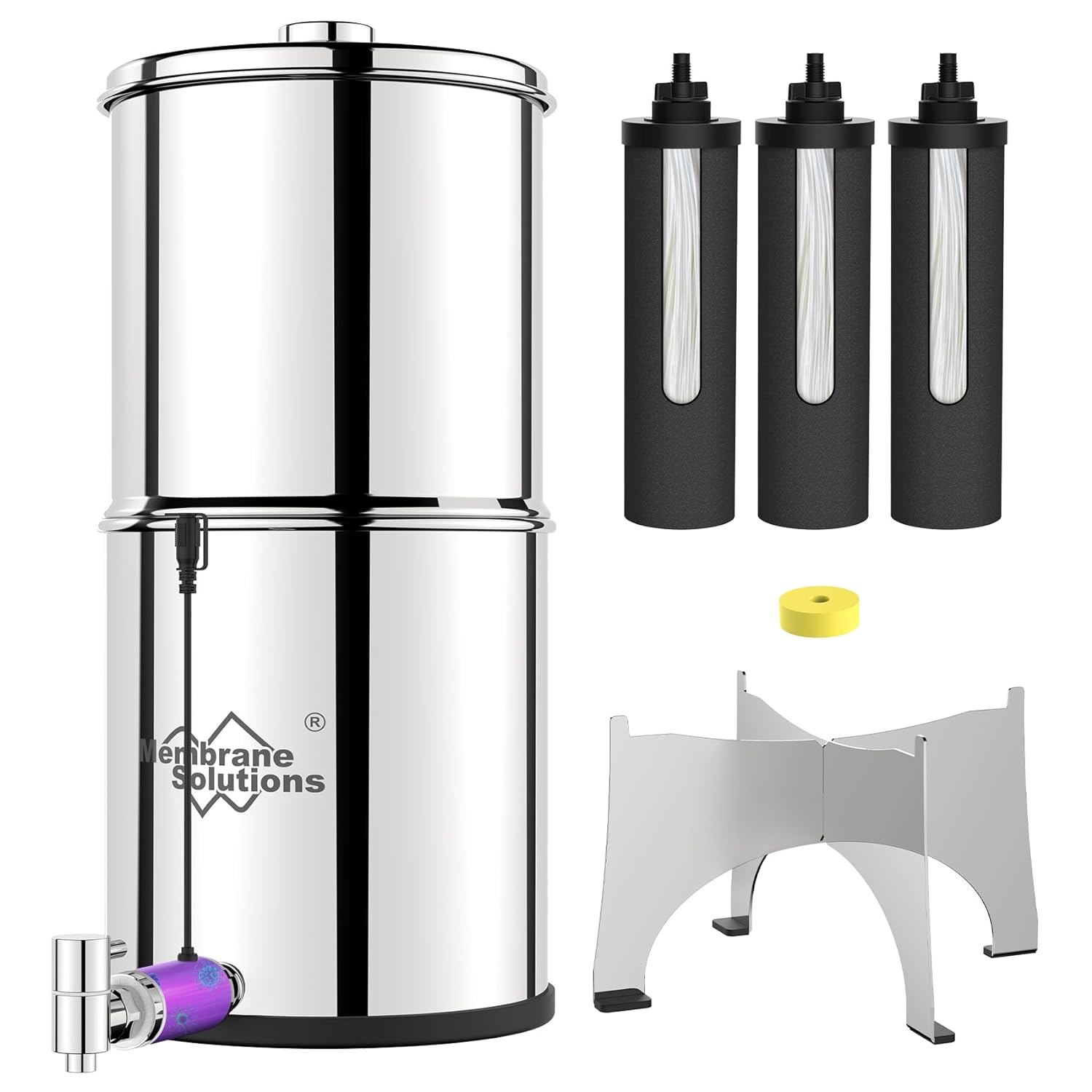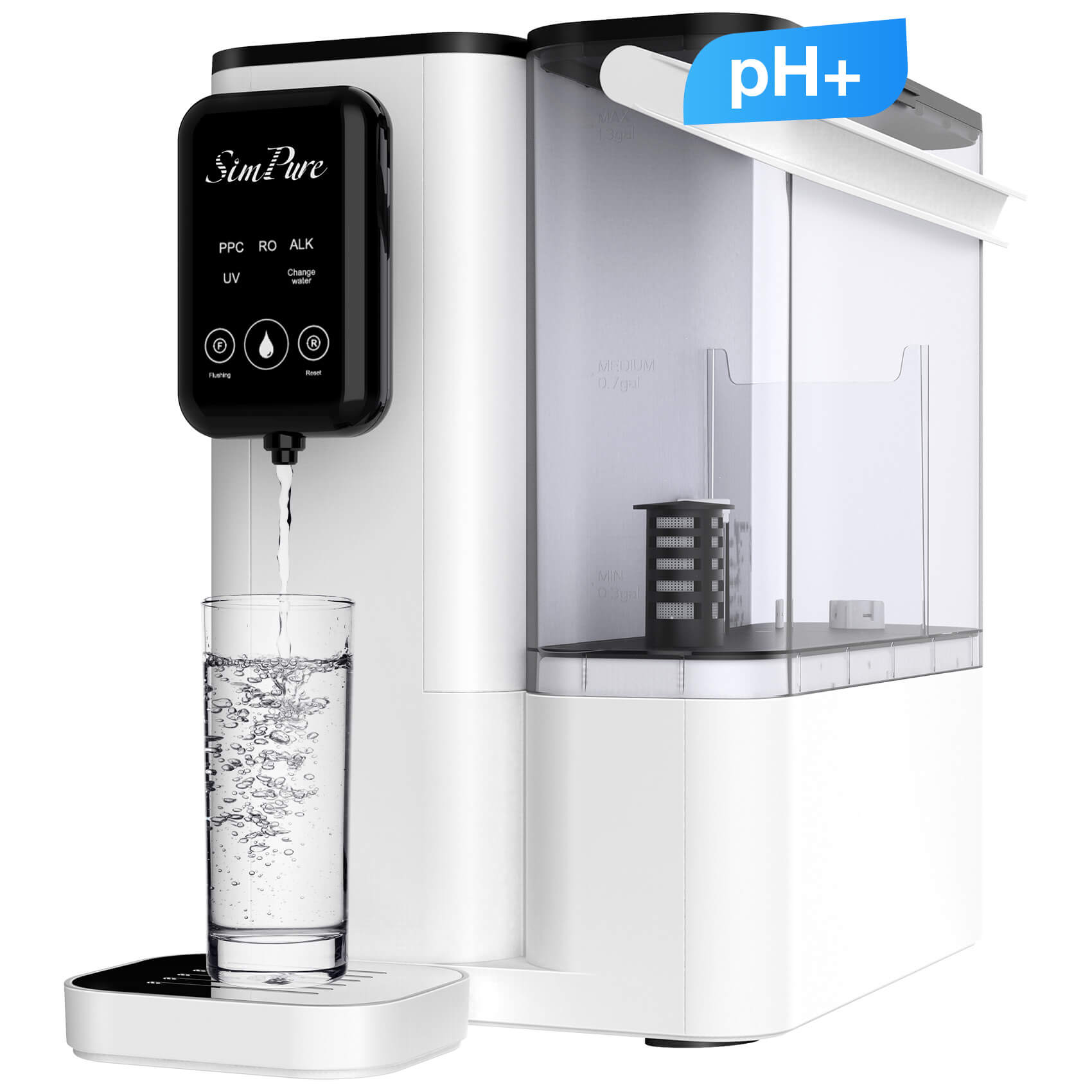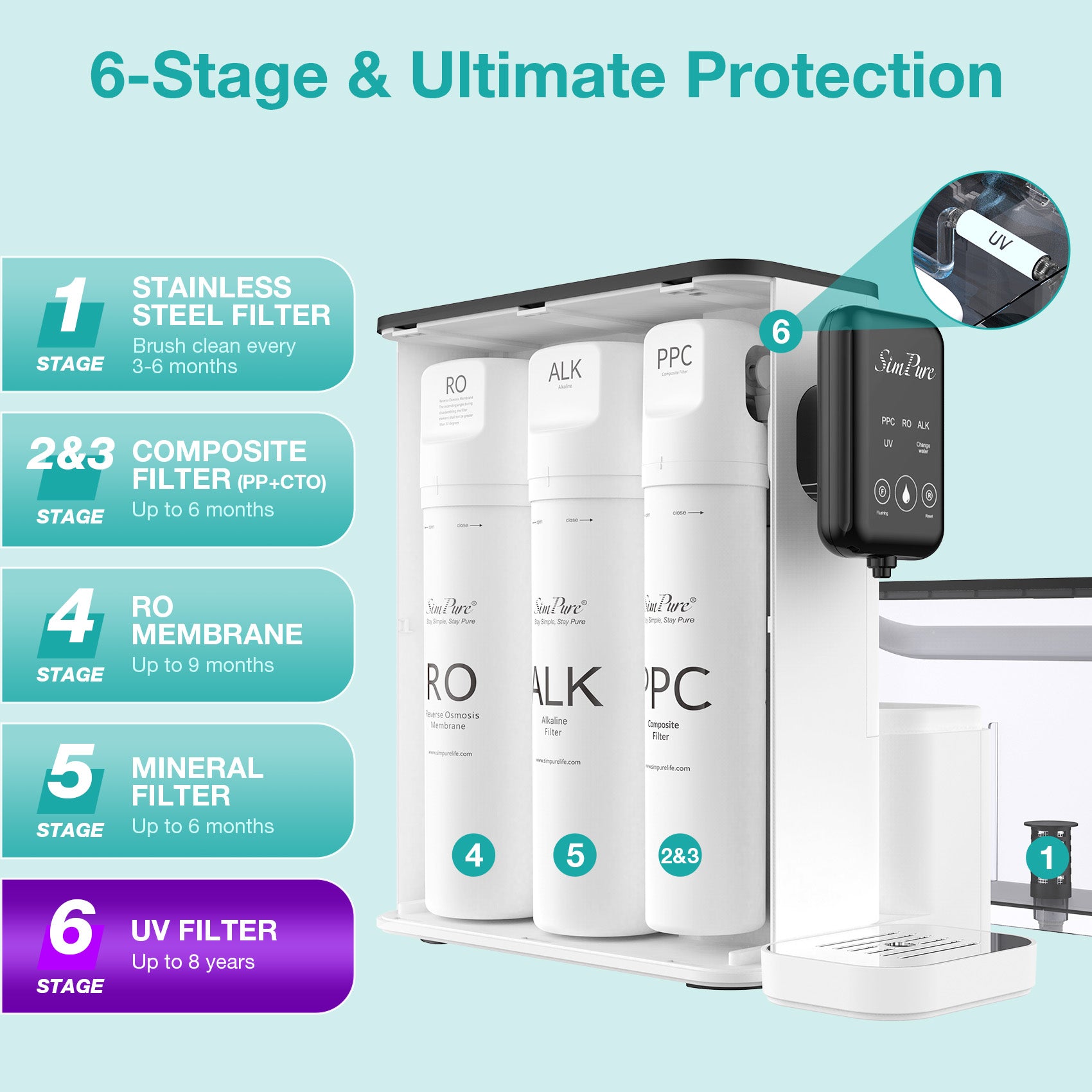Boiling water is a relatively primitive method of disinfection and sterilization. So, a lot of people asking does boiling water remove lead? Can boiling water get rid of lead? The fact is that today's water pollution is serious, boiling water already could not reach the requirements of drinking. A 100-degree heat of boiling water can remove most of the residual chlorine tap water, bacteria, and viruses, but the chloroform and heavy metals like lead in water will not disappear because of the high-temperature after heating. We need to clear that boiling or heating water can not remove lead entirely, but the boiling water can reduce the lead in water in some way. Let us explore this in details:
Where Is the Lead From in Boiling Water?
Excessive lead, mercury and other heavy metals in water will cause chronic poisoning after being absorbed by the human body, which not only affects the physical and intellectual development of children, but also poses a great disease threat to adults. Harmful to the human blood system, nervous system, liver, kidney and other organs. So where does lead from?
There are two main sources of lead in the water: one is water pollution caused by industrial pollutants and arbitrary discharge of wastewater; Second, drinking water pollution is caused by the traditional faucet manufacturing process. At present, most families in our country use copper faucets. The copper faucets use copper alloy material, so the main components are copper elements and zinc elements. Other components are iron, aluminum, lead, tin, manganese, and so on. When the lead comes into contact with air, it oxidizes to form a protective film. But water can peel off the protective coating of lead, immersing it in water and causing lead to release.
At the same time, due to the use of chlorine as a disinfectant in tap water, residual chlorine in the water accelerates the aging of tap water and lead precipitation. Generally speaking, the use time of cupreous bibcock and conduit exceeds 5 years or above, and the release quantity of lead can increase in large numbers. In addition, there is a certain amount of lead in the chemical materials used in the electroplating process of copper taps.
In addition to faucets, cast iron, copper, and PVC pipes also contain lead. Lead contamination is also a problem if these materials are used in water pipelines. Heavy metal lead pollution mainly comes from the heat stabilizer lead salt in PVC plastic. Biological pollution is mainly caused by oxygen penetration and light transmission of pipe, which causes bacteria to grow in the water medium in the pipe. Chemical contamination mainly comes from the infiltration of pipe contact materials.
Does Boiling Water Not Remove Lead? Why?

Boiling water does not effectively remove heavy metals such as lead, primarily due to the physical and chemical properties of lead and water. Lead is a heavy metal that can dissolve in water, particularly in acidic conditions. When water is boiled, it undergoes a phase change from liquid to vapor, but the lead remains in the water. Boiling can actually concentrate lead levels in water as the volume of water decreases due to evaporation, leaving behind a higher concentration of lead in the remaining liquid.
Furthermore, lead is not volatile at typical boiling temperatures (100 degrees Celsius or 212 degrees Fahrenheit), so it does not evaporate along with the water molecules. Instead, it remains in the liquid phase even after boiling. Additionally, lead particles can adhere to the walls of containers or pipes through which the water passes, making it difficult to remove through boiling alone.To effectively remove lead from water, other methods such as filtration, ion exchange, or chemical treatment are required. Filtration systems designed specifically to remove heavy metals like lead can be highly effective in reducing lead levels to safe concentrations. Therefore, relying solely on boiling water as a method of lead removal is inadequate and potentially harmful.
So How Do We Get Rid of Lead in Boiling Water?
Since boiling water can not remove the lead from water, how can we keep away from the lead in water? Here are four ways you can dramatically reduce lead levels in your water and drinking water with a little attention.
1. Consider distillation to separate lead from water.
Distillation involves boiling water to create steam, which is then condensed back into liquid form, leaving impurities behind. Since lead has a much higher boiling point than water, it remains in the original container while the purified water vaporizes. This method effectively separates lead and other contaminants, producing purified water, but it can be energy-intensive and time-consuming compared to other filtration methods.
2. Flush pipes regularly to reduce lead buildup.
Regularly flushing pipes involves running cold water for a few minutes before using it for drinking or cooking. This helps to remove stagnant water containing lead that may have accumulated in the pipes. By flushing the pipes, fresh water from the main supply replaces the stagnant water, reducing the potential for lead buildup and minimizing exposure to lead-contaminated water.
3. Use lead-certified water pitchers or faucet filters.
Lead-certified water pitchers or faucet filters are designed with specific filtration mechanisms to effectively reduce lead levels in drinking water. These devices typically contain activated carbon or other filter media capable of trapping lead particles as water passes through. They are certified to meet stringent standards for lead removal, providing consumers with confidence in their ability to provide safe drinking water.
4. Install RO or activated carbon water filters to get rid of lead.
Water filters, such as reverse osmosis (RO) and activated carbon filters, effectively remove lead from water. Reverse osmosis systems use a semipermeable membrane to trap lead molecules, ensuring purified water. Activated carbon filters absorb lead particles as water passes through, reducing lead levels. Both methods provide reliable and safe drinking water by effectively filtering out harmful lead contaminants, promoting healthier living environments. Learn more details and get solution for lead removal in this blog: water filter for lead removal.
In short, boiling does help to reduce lead but it can not remove lead and heavy metals. With the increasing living standard and serious pollution today, terminal purification of inlet water is an inevitable choice to prevent diseases and ensure health. SimPure has been engaged in the water purification industry for many years and has been committed to making people drink healthy and safe water. SimPure water filter can effectively remove bacteria, viruses, lead and other heavy metal ions in water, excessive calcium and magnesium ions, sediment, odor, etc., so that people can solve health problems from drinking water, and reduce the probability of disease.





